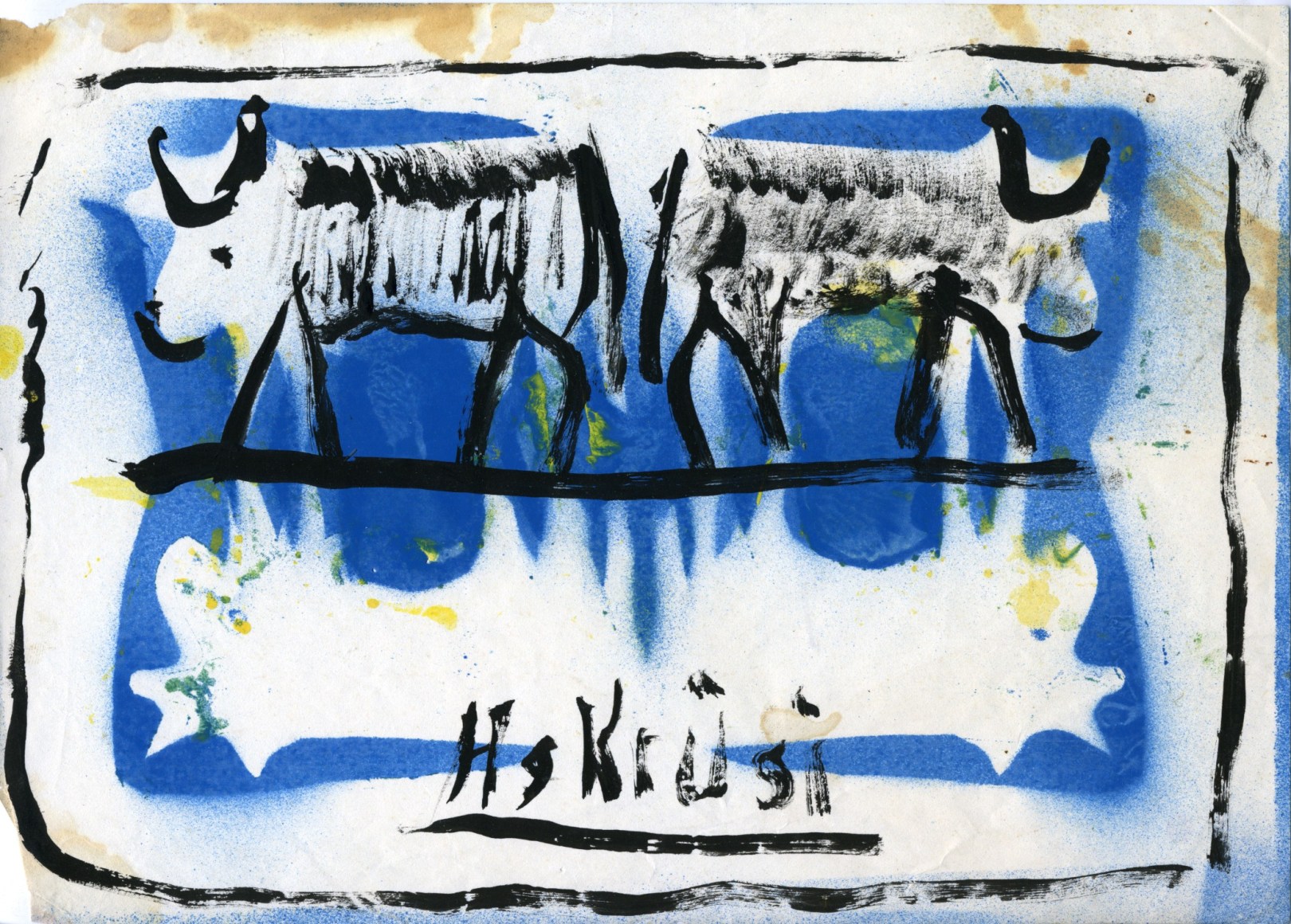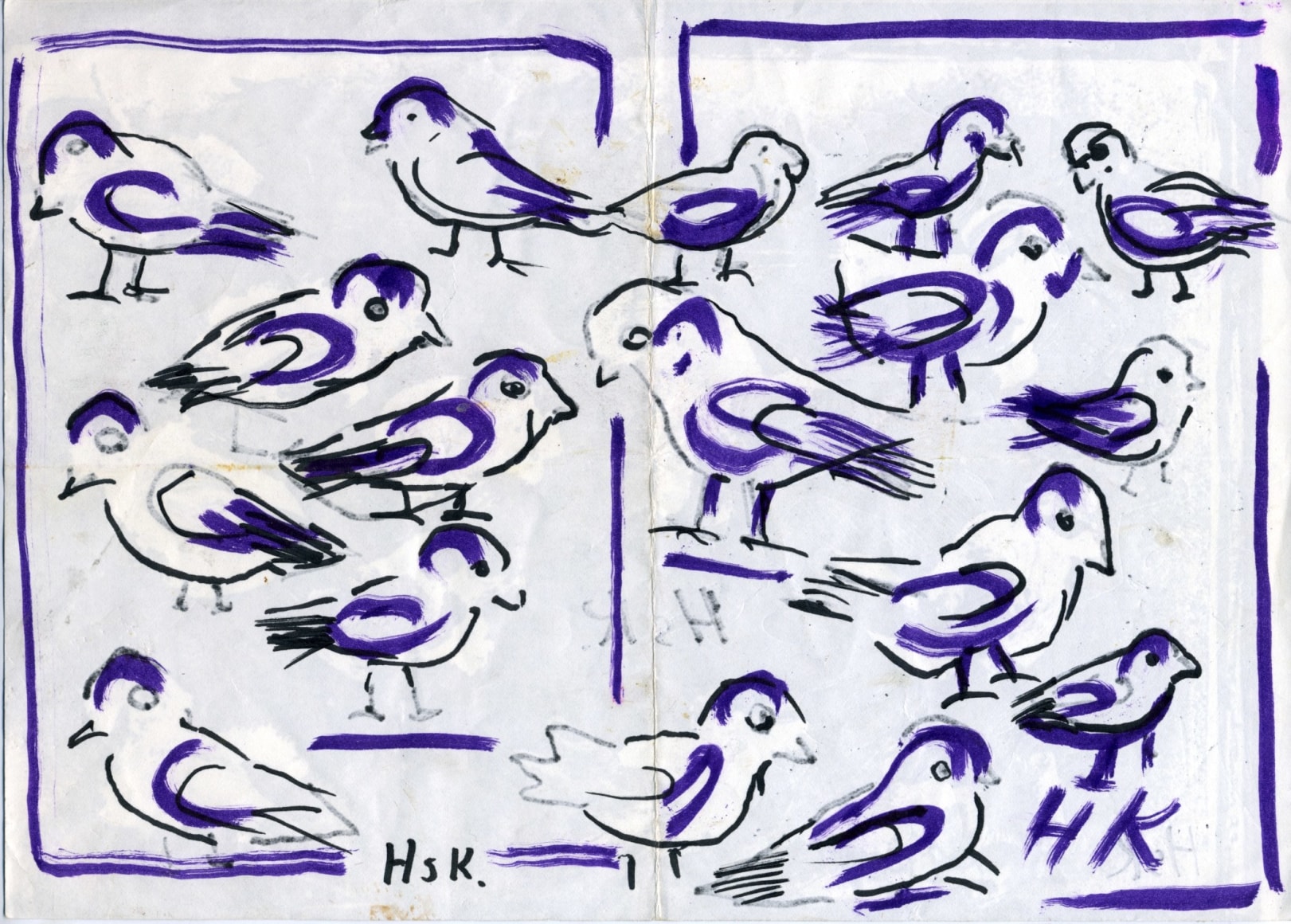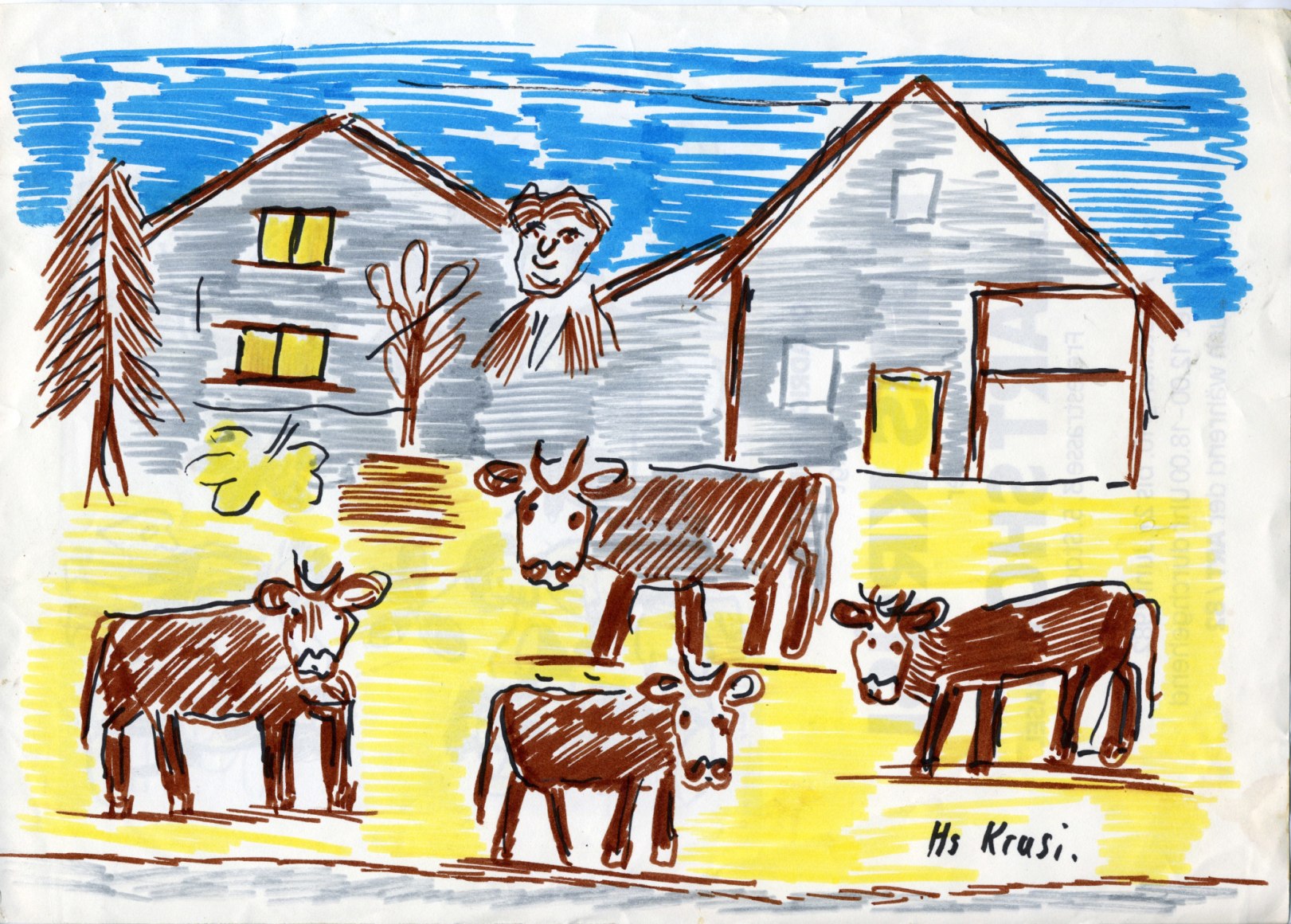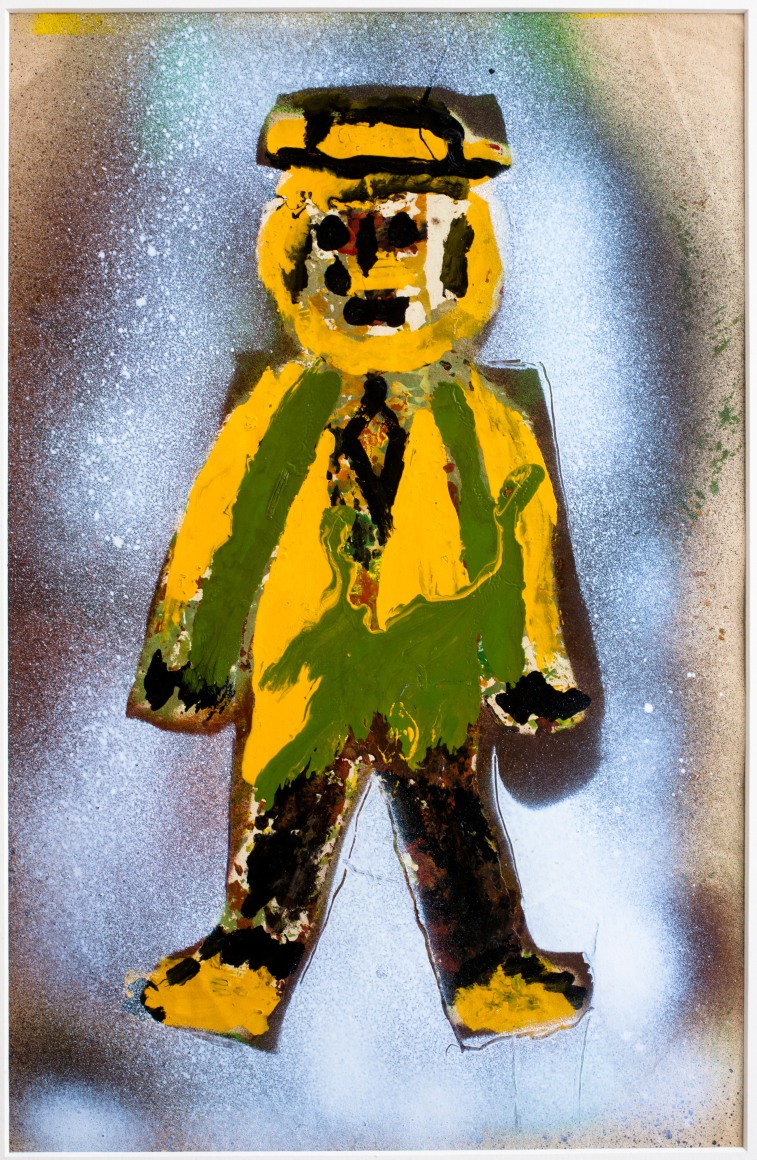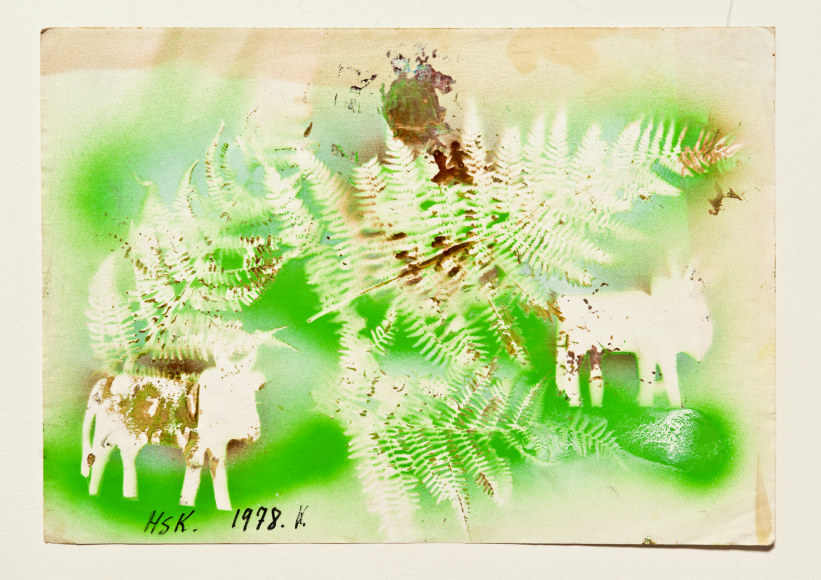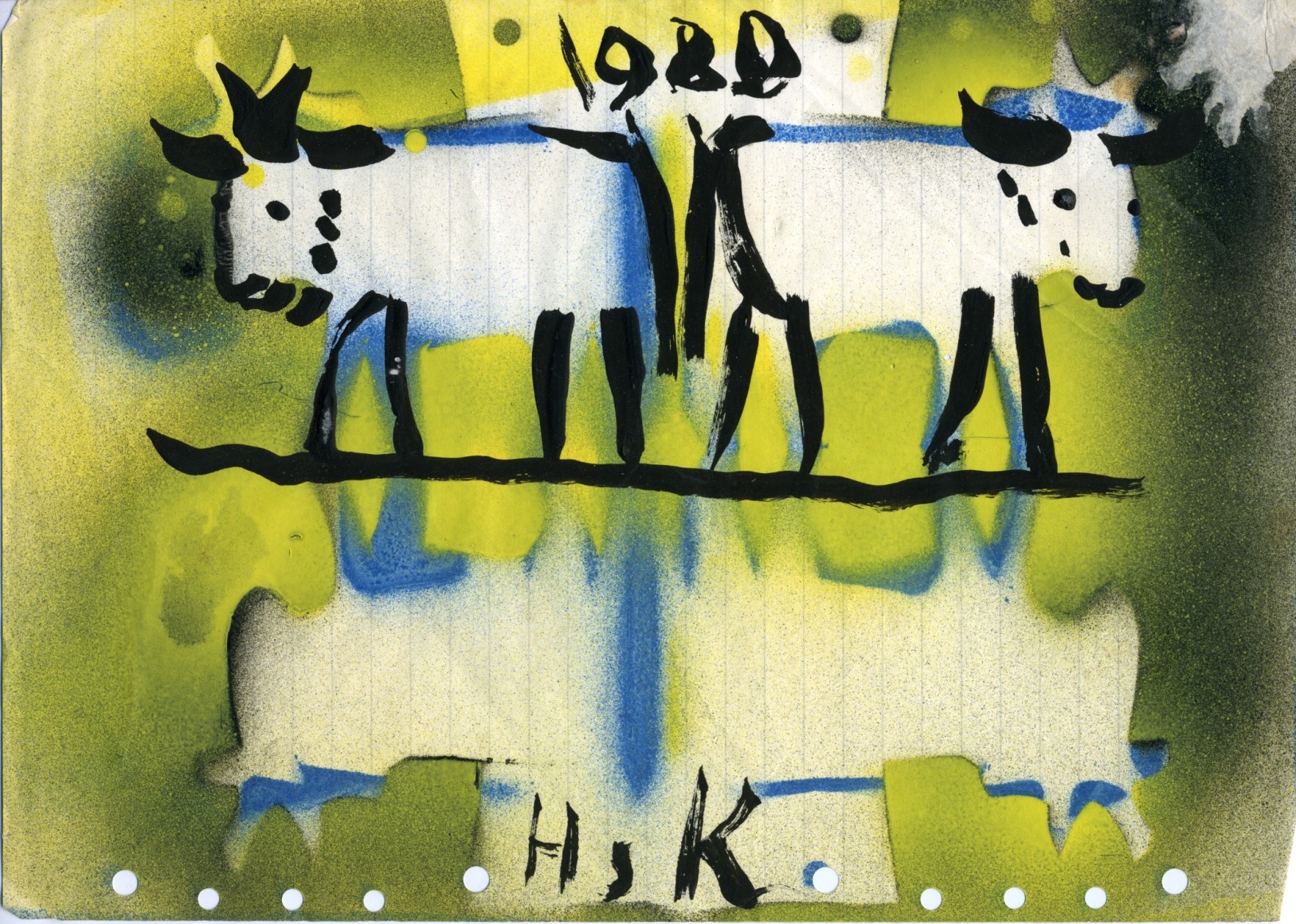Born 1920, Zürich, CH
Died 1995, St. Gallen, CH
Hans Krüsi was brought up in German-speaking, eastern Switzerland, first by foster parents and, later, in an orphanage. He received only an elementary-school education and was almost always poor; for years, he moved around frequently. After World War II, while still in his 20s, he began commuting from St. Gallen to Zürich, where he set up a flower stall on the Bahnhofstrasse. In the mid-1970s, he began making postcard-size drawings and paintings on paper or cardboard, which he sold along with his flowers. He made simple line drawings with felt-tip pens on thin-paper napkins he found in cafés.
"Most of all, I love to paint cows," he once observed. In one of his home/studio spaces in a nearly empty building, he lived with cats and with pigeons he allowed to fly in and nest atop stacked-up crates or on ceiling lamps.
In 1980, a St. Gallen dealer "discovered" Krüsi's work and began to show it; the Swiss press ran with the story of the humble flower-seller turned cultural icon who, before long, was proudly handing out business cards that identified himself as a "picture painter." In fact, Krüsi enjoyed playing the role of the artist and reveled in creative experimentation. In addition to making hundreds of audio recordings of ambient sounds, such as church bells, cow bells and birdsong, he used photocopiers as tools to develop variations of his drawings, integrated painted photocopies of his drawings into his mixed-media works and shot thousands of Polaroid photos. In particular, those photographic images—of his art-filled home, his animals, his exhibitions and Krüsi in flower-covered hats—offer a vivid record of this self-taught artist's fascinating process of self-invention. His creative spirit, marked by whimsy, exuberance and unbridled passion, still comes across powerfully in his work, from small drawings of cats or flowers to large, complex, multi-element pieces set in the artist's personally crafted frames.
With their innovative use of recycled materials and their psychedelic colors, Krüsi's works bring together painting and collage, impulsive gestures and recurring, signature motifs. As a man and as an artist, Krusi embodied the sense of independence and originality that have long been essential sources of value in the best outsider art. Looking back, it's clear that his artistic practice was sophisticated and self-conscious in ways that feel contemporary, too. In its easily appropriative sensibility, it was unwittingly postmodern. Krüsi's indefatigable documenting of his world brings to mind Andy Warhol's non-stop photographing and audio-recording of just about everything, including his most routine phone chats with his friends, that the pop art star made throughout his own career.
- Phillip March Jones
SELECTED SOLO EXHIBITIONS
2012
Hans Krüsi, Appenzellerhaus, Zürich
Hans Krüsi, Andrew Edlin Gallery, New York
2005
Hans Krüsi, Kunstmuseum des Kanton Thurgau, Warth (Switzerland)
1990
Hans Krüsi, Collection de l'Art Brut, Lausanne
SELECTED GROUP EXHIBITIONS
2012
Armory Show, Andrew Edlin Gallery, New York
2010
The Museum of Everything, Pinacoteca Giovanni e Marella Agnelli, Turin
2009
In Through the Out Door, Andrew Edlin Gallery, New York
Museum of Everything, London
2005
Outsider Art Fair, Andrew Edlin Gallery, New York
1985
Art Basel, Galerie Susi Brunner, Basel
PUBLIC COLLECTIONS
Collection de l'Art Brut, Lausanne
Kunstmuseum des Kantons Thurgau, Warth
Kunstmuseum, St. Gallen
Musée d'Art Brut, Neuilly-sur-Marne, Paris
Museum im Lagherhaus, St. Gallen
Outsider Archive, Musgrave Kinley Collection, London
SELECTED BIBLIOGRAPHY
The Museum of Everything, exhibition catalogue, Pinacoteca Giovanni e Marella Agnelli & Electa, Turin/Milan, 2010.
Goméz, Edward M., "A Nothing Who Became Something: An Artist," New York Times, December 1, 2002.
Obrist, Marco, "Hans Krüsi," Biografisches Lexikon der Schweizer Kunst, Hrsg. Schweizerische Institut für Kunstwissenschaft SIK, Zürich, 1998.
Peiry, Lucienne, Art Brut: The Origins of Outsider Art, Flammarion, Paris, 1997.

